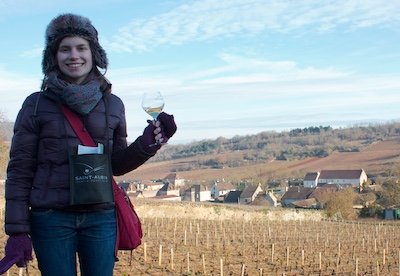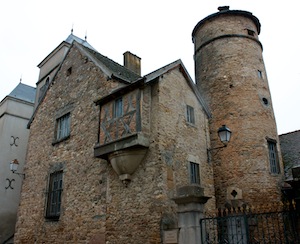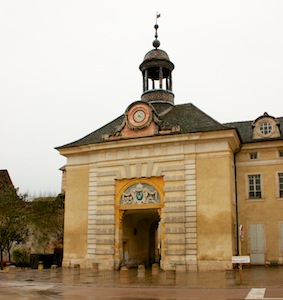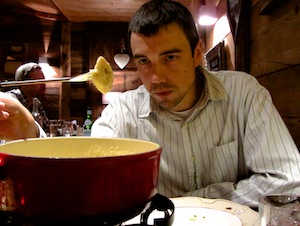We have been living in Burgundy for about a year and a half now and we have really gotten into the wine culture. In the past, I have never been a huge fan of wine or alcohol in general. I drank from time to time, and I sometimes enjoyed it just fine, but it was never a big part of my life. However, wine is an important part of the culture here, and beer was a big part of the culture when we were living in Germany. So as outsiders it kind of makes sense to really embrace these drinks as a way of learning about the cultures. When living in Germany, we tried many types of beer, I toured a couple breweries, and we even went to Oktoberfest once (which is nowhere near where we were living). Now that we are in France, we have really embraced the wine culture, to an even greater degree than we embraced beer in Germany. This is a great way not only to learn about wine, but also to see a lot of small villages around the region. We rarely drink at home. Because of our relatively cheap weekend hobby, we have really gained an in-depth knowledge of these places and the people. We’ve even become acquainted with some of the producers, who have been very welcoming and generous to us.
Terroir
One thing that makes Burgundy unique, as compared to tasting anywhere else in the world, is the incredible diversity available from only a couple grape varieties. Most of the grapes here are either Chardonnay (white) or Pinot Noir (red), though there are a few minor exceptions (Aligote and Gamay, for example). In terms of differences then, the concept of terroir is very important. It’s a very complex subject, but basically the ground expresses itself through the grapes. Grapes grown in a different village or even on a different part of the same slope will have different sun and wind exposure, as well as different minerals and water availability in the soil, for example. This affects the taste drastically and, from what I’ve heard, there is basically no other place on earth with such diversity. Also, this concept is very historic here. Many of these vineyards were mapped out by monks centuries ago, because even they understood that different plots of land produce wine of different quality, some of which is subjective, of course.
Finding Burgundy wine events
There is a wine tasting event within an hour’s drive almost every weekend. However, one thing that I noticed when we first moved here is that it isn’t entirely clear how to best find these events. Yes, there is a website that lists a lot of them, but it is poorly designed and it lists special festivals and open houses right in the same list as tasting opportunities that go for months. There just isn’t a great events calendar for Burgundy wine tasting and certainly not in English. That said, you can check the following sites for some information:
It is also sometimes possible to look at the websites of any villages that you find interesting. They often will list local events.

Occasions to taste wine in Burgundy
Just to give you an idea of what to expect and the general etiquette, here are a few types of occasions on which one might go wine tasting in Burgundy:
- Regular tasting at an individual domaine: Some domaines have an open tasting room many days of the week where one can just come in and do some tasting. In this setting it is considered good form to buy something. We usually do buy at least a bottle of whatever our favorite was from the tasting, within our price range of course, and this way we always have a collection of wines at home that are not always super fancy but very decent stuff that we like. For example, we often go to Domaine Berthenet in Montagny. They are open most days and they have quite a solid selection of good wines.
- Portes Ouvertes: This is where an individual domaine or even an entire village has a free tasting event. For these, you just follow the signs and taste wines. Usually it does not cost anything, but once in a while they will charge a couple euro. Though it is considered good etiquette to buy something if it is free, realistically these events are crowded and not everybody buys. Our deliciousness threshold to buy at an event like this is higher, because we can’t taste at every place in town and buy something everywhere.
- Wine festivals: This is what we mainly attend. For various reasons, throughout the year many of the little villages have special festivals. For these, you generally pay 5 or 6 euro to buy a glass and walk around the village tasting wine at each domaine. Just due to these events, we have way more glasses than the number of people we could ever entertain in our home, and each village has their own glasses so it’s a fun collection for us. Because you pay to participate in one of these festivals there is less expectation to buy bottles. In fact we’ve been to events where the producers didn’t even have bottles available for sale.
- Expositions: Sometimes in the larger towns (think Beaune or Mâcon), there are indoor events with an admission charge. These events typically also have food available to sample and buy. The downside of being indoors is that you are isolated from the character of the town, and instead it really is just about the food and wine, but we do usually try to walk around the town afterwards.
Note that here I’ve only listed the types of events that are generally practical for our income bracket. There are some events where you pay something like 70 euro and walk around tasting wines in a vineyard. These may be cool, but we haven’t done one yet just because it’s not really necessary to spend this type of money to taste really good wines in Burgundy.
There are some events that are seasonal and they occur in many villages around the same time. For example, the past couple weeks has been filled with events related to Saint Vincent. We actually attended a banquet in Buxy (for the Montagny appellation) two weekends ago, for the second year. Maybe Tiffany will be writing about that, because it’s an awesome story in itself. In addition to these various events around Burgundy, each year one village holds the Saint Vincent Tournante. This is a big tasting event and it is worth seeing at least once if you get the chance. We went last year when it was held in Saint Aubin. However, last weekend we opted not to go to the 2015 event. It’s just not as interesting to us as the little festivals in random villages. There are crowds to fight through just to get a taste, the number of tastes are limited (this is sometimes technically the case at other festivals, but it is rarely enforced), and it’s expensive (15 euro for 7 tastes this year). Additionally, outdoor tasting at this time of year is not really great for enthusiasts because the wine is always too cold.
Stay tuned…
This was a broad overview of how to taste wine in Burgundy. Of course there are also businesses, such as large cellars and wine shops, where wine can be tasted. We do go to these sometimes, and some are awesome, but here it was my intent to talk about opportunities to get a little more culture. Hopefully we will begin writing some things about individual villages and events we like. We are not experts on wine, but we are learning. We want to share what we can.






 Fromage
Fromage